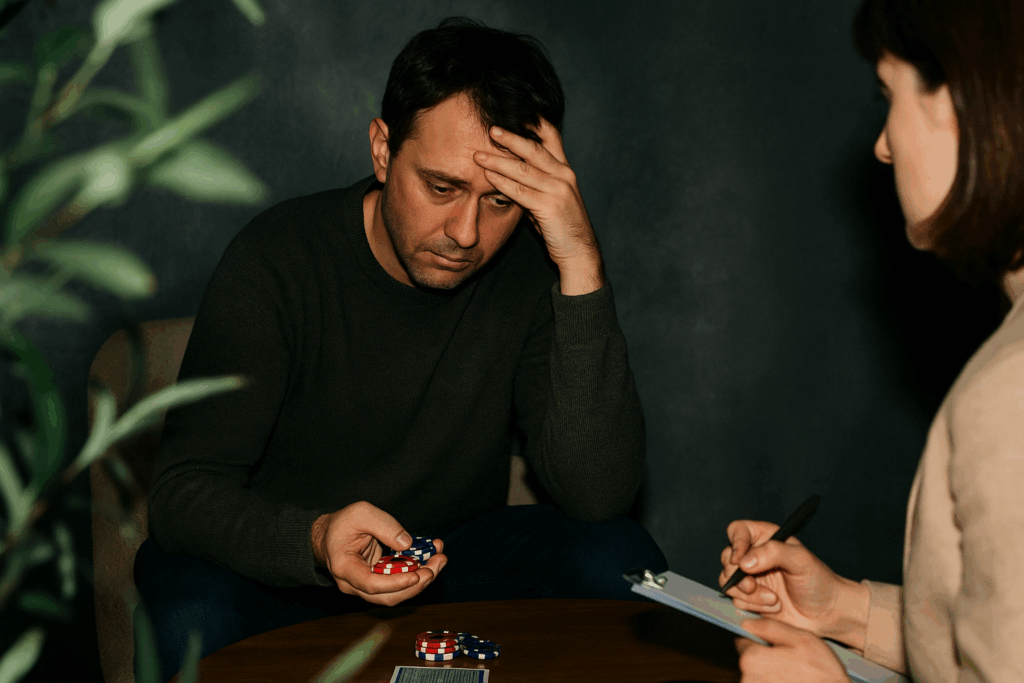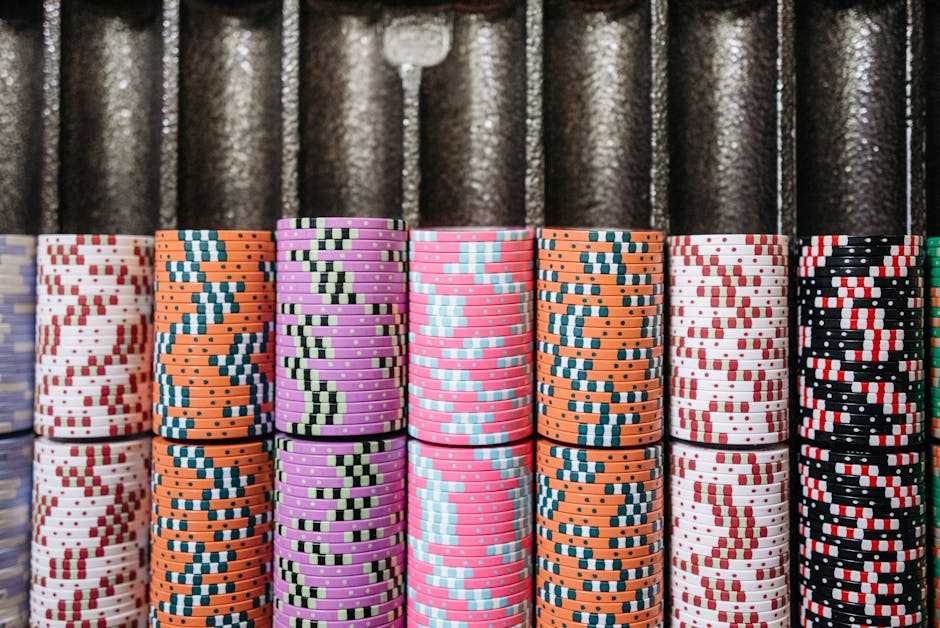Understanding Gambling Addiction
Problem gambling isn’t just about losing money—it’s a behavioral addiction rooted in compulsion. The gambler keeps playing despite the consequences, chasing wins to make up for losses, and often lying or hiding the extent of their activity. It’s not always about flashy casinos or online poker sites either—lottery tickets, sports bets, and even slot machine apps can lead someone down the same path.
But the fallout isn’t limited to the gambler. Families feel it in the form of financial instability, broken trust, volatility at home, and emotional strain. It can erode relationships, tank savings accounts, and leave spouses and kids feeling like they’re walking on eggshells.
There are signs worth watching for: disappearing money, frequent absences, secretive behavior, mood swings linked to wins or losses, or unusual defensiveness about finances. If bills go unpaid or valuable items go missing, it’s time to ask hard questions. Catching the pattern early is critical. Pretending it’s not happening doesn’t protect anyone—it just gives the problem more time to dig in.
Step 1: Get Informed, Not Emotional
When someone you care about is caught in a cycle of problem gambling, the first instinct is often anger. But before you confront them, stop. Learn the facts. Gambling addiction is more than just bad choices—it’s a complex behavioral disorder tied to reward loops in the brain, much like substance abuse. What feels like betrayal may actually be compulsion. That doesn’t excuse the fallout, but it does help you respond with clarity instead of just frustration.
There are reliable resources to start with. The National Council on Problem Gambling offers free hotlines, reports, and FAQs. Gam-Anon is built for families. Many clinics and telehealth providers also host webinars or downloadable guides. Get the basics before jumping to conclusions—you can’t offer real support if you’re only working off guesswork.
Judgment doesn’t open doors. It slams them shut. Harsh words can drive secrecy and shame, both of which keep the addiction alive. A more grounded approach—curiosity, not condemnation—sets the stage for real conversations and possible change. This step isn’t about letting someone off the hook. It’s about keeping the door open when they’re ready to walk through it.
Step 2: Set Boundaries Without Ultimatums
Drawing the line between genuine support and unintentional enabling is one of the most important steps families can take when dealing with a problem gambler. Creating clear, respectful boundaries allows everyone involved to begin moving toward recovery—together, but with accountability.
Support vs. Enabling
Understanding the difference between helping and enabling is critical:
Support means:
- Encouraging treatment and healthy coping mechanisms
- Listening without judgment, while still holding firm boundaries
- Offering emotional support without financial bailouts
Enabling means:
- Covering debts or lying to others on their behalf
- Ignoring repeated behaviors or promises that aren’t followed through
- Making excuses to protect them from consequences
Healthy Boundaries in a Family Dynamic
Families should focus on setting boundaries that protect their emotional and financial wellbeing, while still showing care. A few examples include:
- No loans or financial handouts unless recovery actions are underway and funds are managed collaboratively
- No lying or covering for the gambler with employers, friends, or other family members
- Establishing household rules such as curfews, phone access, or location sharing when trust has been broken
- Refusing to engage in arguments about gambling-related losses
Practical Tips for Sticking to Limits
Setting boundaries is only effective if you and other family members stick to them. Here’s how to stay firm:
- Write boundaries down and review them as a family
- Use “I” statements to avoid escalating conflict (e.g., “I will not give you more money if you gamble again”)
- Prepare for pushback—expect the gambler to test limits or manipulate emotions
- Get external support—whether through a therapist, counselor, or support group
- Check in regularly as a family to reassess rules and progress
Boundaries protect everyone involved—not just from financial harm, but from the emotional toll of addiction. By standing firm, families shift the responsibility for recovery back where it belongs: with the person facing the addiction.
Step 3: Encourage Professional Help
Trying to talk a problem gambler out of their addiction with logic or emotion rarely ends well. Arguments spiral, defenses go up, and nothing changes. Counseling, on the other hand, creates space. It’s neutral ground, guided by someone trained to cut through denial and resistance. The emotional weight isn’t on you—and that matters.
Denial is one of the strongest forces in addiction. It’s not just stubbornness. It’s how someone protects themselves from facing stress, shame, or loss. Pushing directly against it usually means a fight. A better path is to gently encourage help, share stories of others who’ve gotten better, and focus on hope, not control. Let them know change is possible, but it doesn’t mean doing it alone—or perfectly.
When they’re ready (or even if they’re not sure), offer practical options. Start with specialized therapists who understand gambling addiction—this isn’t one-size-fits-all therapy. Tap into support groups like Gamblers Anonymous or SMART Recovery. Many offer meetings for family members too. Online platforms also connect users with licensed professionals, often within 24 hours. For many families, just taking that first step—booking a consult, attending one meeting—can shift everything.
This step doesn’t require shouting, pleading, or ultimatums. It just needs quiet persistence and a plan.
Step 4: Take Care of Yourself Too
Living with someone who has a gambling problem isn’t just stressful—it can be exhausting, isolating, and sometimes even traumatic. Family members often get caught in the fallout: financial strain, broken trust, constant worry, and the mental load of trying to keep everything together. It wears on you. Fast.
That’s why self-care isn’t a luxury here—it’s survival.
Start by putting some emotional distance between you and the addiction. That doesn’t mean cutting the person off. It means recognizing that you are not responsible for their choices, and their recovery isn’t your job alone. You can support, but you can’t carry them.
Get some structure around your own needs. Eat real meals. Sleep. Talk to friends about something other than your situation at home. Carve out part of your life that has nothing to do with gambling.
Also, don’t go it alone. There are support groups designed specifically for families—think Gam-Anon, or local meetups for spouses, siblings, and even adult children. These spaces give you tools, validation, and strategies for coping that you won’t find scrolling the internet on your own.
You matter in all this, too. Don’t forget that.
Step 5: Foster a Balanced Home Environment
Chaos feeds addiction. One of the most grounding things you can do is keep daily routines as steady as possible. This doesn’t require perfection—just regular meals, sleep, and movement through the day. Predictability helps everyone feel more secure, especially when one family member is in emotional flux.
Next, get intentional about your shared time. Step away from conversations that orbit gambling. Replace them with small habits that signal a shift—morning walks, family dinners, basic hobbies. It doesn’t have to be deep or expensive—gardening, puzzles, movie nights, or weekend projects help reshape the culture of the home.
These small adjustments aren’t quick fixes, but over time they reduce background stress and rebuild trust. Consistent behavior sends a clear message: we’re here to support, not spiral. A healthy environment doesn’t solve the addiction, but it gives recovery a fair shot.
Tools for Managing Money and Access
Money and access to it are fuel for problem gambling. Cutting off that fuel doesn’t mean total control; it means thoughtful structure. Joint financial oversight is a simple place to start. That could mean shared access to bank accounts, requiring two signatures for large withdrawals, or setting up alerts for spending activity. It’s not about spying. It’s about accountability and clarity.
Prepaid cards can help maintain some independence while keeping spending on a leash. Loaded with fixed amounts and not connected to credit, they’re low-risk tools for building responsibility. Daily or weekly spending limits through online banking work in a similar way—they cap impulsive decisions before they spiral.
Technology can do some of the heavy lifting. Banking apps allow for spending alerts, account locks, and even category-based budgeting. Some apps also flag gambling transactions or block them outright. These tools won’t solve everything, but they take pressure off the humans involved—and that matters.
Boundaries don’t stop with willpower. Systems make them stick. For more on setting realistic financial limits, check out Setting Limits: How to Gamble Responsibly.
When Relapse Happens
Relapse doesn’t mean failure—it means recovery is still happening. For people struggling with problem gambling, setbacks are part of the process. It’s rarely a clean, upward climb. There will be dips, moments of weakness, and days when old habits sneak in. That doesn’t mean the progress up to this point is gone. It means there’s more work to do.
The way you respond matters. Leading with blame or guilt only fuels shame—which often drives more gambling. Instead, keep the focus clear: address the behavior, not the person. Reinforce the boundaries you’ve already discussed. Ask questions without accusation. Support them in getting back on track, not brushing it off or pretending it didn’t happen.
That said, not all setbacks are equal. A single slip followed by a course correction is one thing. Repeated lying, hiding money, or returning to daily gambling may signal more serious backsliding. Watch for signs like defensiveness, secrecy, or an abrupt shift in mood after spending time alone. These may be red flags, not just bumps in the road.
Take relapse as a wake-up call—not a reason to quit supporting, but a reason to double down on structure, honesty, and professional help. Repair is still possible, but only if everyone stays clear-eyed and grounded.
Final Thoughts
Patience Is Power
Recovery from gambling addiction is not a quick journey. Families may witness moments of progress followed by difficult setbacks. It’s important to remember:
- Real change takes time and consistency
- Each step forward, no matter how small, is progress
- Pressuring someone to “get better fast” can do more harm than good
Long-term success often hinges on the ability of family members to remain patient, even when the path gets rocky.
Support Without Fixing
Trying to “fix” a loved one often leads to frustration for both sides. True support is not about taking control—it’s about being present without judgment.
- Don’t try to solve problems on their behalf
- Offer encouragement, not control
- Focus on listening more than lecturing
Being a steady presence builds trust and creates a safe space for healing.
Healing Requires a Whole-Family Mindset
Problem gambling doesn’t only affect the person with the addiction—it impacts the entire family ecosystem. Sustainable recovery is more likely when everyone is involved in understanding, setting boundaries, and supporting change.
- Make open, honest communication a family priority
- Share responsibilities and emotional load where appropriate
- Celebrate small milestones together as a family
Isolation only deepens dysfunction. Connection, communication, and collective growth are what move families forward.


 Nealsuner Williams contributes to GambleFitnessSplash with articles that dive into fitness, gaming, and modern tech. With a passion for exploring how innovation impacts daily routines, Nealsuner helps readers discover smarter ways to integrate wellness and responsible play.
Nealsuner Williams contributes to GambleFitnessSplash with articles that dive into fitness, gaming, and modern tech. With a passion for exploring how innovation impacts daily routines, Nealsuner helps readers discover smarter ways to integrate wellness and responsible play.

